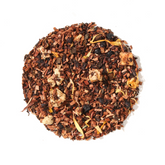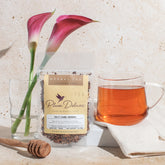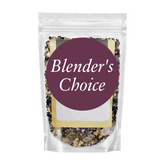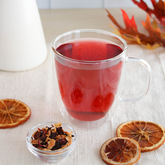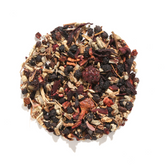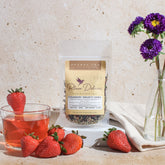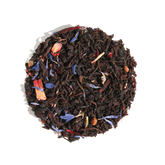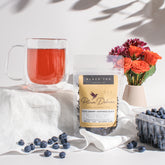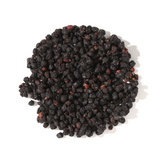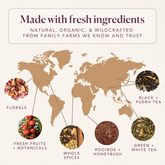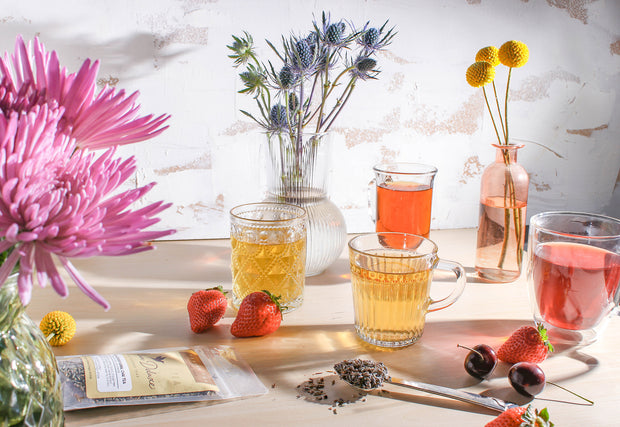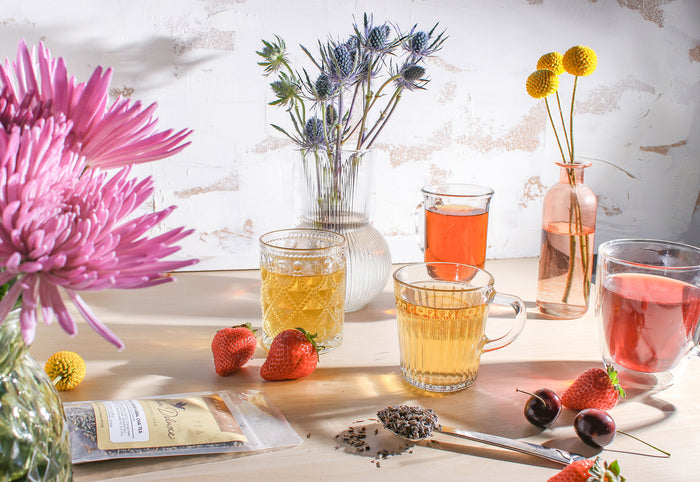Calling all chai lovers! This southern spiced tea recipe will leave you deeply spoiled, with its beautiful Maple Scottish Breakfast Tea base, and some of the finest spices available. It leaves a complex, yet reminiscent aroma and flavor on your senses that will draw you back to simpler times.

The Spice of Life
We all know that what makes a chai a chai is the miraculous and delectable mirage of spices.
For those of us familiar with chai we may know a few common spices that are incorporated, but what about black peppercorn, or even bay leaves? Do you know what gives chai its depth, spice, irresistible flavor? Let’s sink ourselves into the world of chai spices for a better acquaintance.
Cinnamon, cardamom, and cloves—the staple spices most people know are found in chai. Cinnamon is a spice that comes from many varieties of evergreen trees—genus Cinnamomum—the inner bark to be exact. This is how we get the cinnamon sticks we do…rolled up beautifully with their irresistible flavor.
There are two main types of cardamom—black and green. The main difference will be found in the taste each provides. While green cardamom pods are harvested before maturity and maintain a subtle flavor, black cardamom pods are harvested later and roasted to give them an earthy and smokey flavor. If your taste buds are really in tune, you may even pick up hints of menthol.

Ever heard of putting black peppercorn (aka black pepper) in your chai? I know—sounds a bit off, right? I assure you it’s worth the risk, as you’ll soon find out when you make this southern spiced tea recipe! Black peppercorn gives a spicy, warm, and woodsy characteristic to your chai. It’s a must-have ingredient if I do say so myself!
To wrap up this section, I thought we’d discuss anise, pronounced a-nuhs. I recently had a conversation with a friend who insisted it was pronounced this way, not a-niece the way I’d been pronouncing it. She was right! Anise has a strong, licorice-like flavor, and has a sweet fragment aroma. Its complexity both in aroma and taste is one of my favorite spices in chai.
Remember, chai is typically made with a black tea base, but you can venture out into the world of greens and herbals if you desire. I also recommend this southern spiced tea recipe with our Fog Cutter black tea. One other suggestion is our House Blend black tea. You can’t go wrong with either!

Bay is My Bae
Yes, I went there—the too-funny-not-to-throw-out-there, pun! Ever thought of putting a bay leaf in your chai?
I must admit, although a common spice I add to my soups and stews, it surprised me to learn that this is a spice sometimes added to chai. Upon further reading, I discovered why—read on to find out!
Believe it or not, there are multiple kinds of bay leaves, and each has a distinctive flavor when used in recipes.
Bay laurel or sweet bay is the one we most commonly see on the grocery store shelves. It’s known for mixing in with chicken or beef and gives an added depth with its earthy flavor, that breaks up the heaviness of soups or stews. If you live in the Mediterranean, you’re fortunate enough to pick this herb fresh on the hillsides as it grows wild.
Indian bay leaf is where we’ll find the flavor we’re looking for in our southern spiced tea. Indian bay is not interchangeable with sweet bay, as the flavors are completely different and will leave you with an interesting tasting soup, or a somewhat minty and bitter tea. Indian bay leaf is deliciously aromatic—cinnamon and cloves, anyone? Yes, indeed that is what you’ll find with this gem!
Last, but not least, if you’re lucky enough to get your hands on West Indian bay leaf, this is the pick of the litter! It is so aromatic with a distinct flavor of cloves, and a dash of cinnamon and nutmeg. Imagine this with a slightly spicy note such as that found with black peppercorn. Need I say more?

Milk Matters
Steamed versus frothed milk—a debated question among tea lovers. Is there a difference in flavor? How about the texture the finished drink provides? Unsure of the temperature your milk should be? You have the questions and I have the answers!
When you steam your milk, the process of heating it while simultaneously pulling in the air is what creates the dreamy and creamy texture many strive for.
When frothing milk, the major difference is the size of the air bubbles created. Frothing milk creates larger bubbles that sit on top, and when pouring into your drink, allows the fluffy foam to float.
How about temperature? Wondering if it matters when steaming your milk? The answer is an unequivocal, yes! The ideal temperature for your milk is between 155-165° Fahrenheit. This can be easily measured using a temperature gauge. Additionally, heating your milk too quickly can burn it, leaving that much-unwanted taste. The slower you heat the milk, the more you’re looking to draw out the sugars and sweet taste in the milk.
One quick tip I’ll leave you with is how to steam your milk without a machine—the old-fashioned way! Simply measure out your milk into a mason jar, place the lid on and shake well. This creates the bubbles you’re looking for. After removing the lid place your jar in the microwave and warm. This sets the bubbles and heats the milk. Ta-da!
Southern Spiced Tea Recipe
Ingredients:- 1 cup water
- 1 cup milk
- 1 teaspoon Heritage Blend black tea
- 1 large piece crystalized ginger
- 1 anise star
- 1 cinnamon stick
- 3 cardamom pods
- 3 whole allspices
- 2 whole cloves
- 1 Indian bay leaf, dried
- Dash of ground black pepper
- 1-2 tablespoons sugar *If desired and to taste
Put cardamom, cloves, bay leaf, and anise star in a mortar and gently crush them with the pestle. Crush as finely as possible. *Your bay leaf does not need to be finely crushed.
In a saucepan, heat the milk and water.
Add in the crushed spices, whole cinnamon stick, allspices, crystalized ginger, and dash of ground black pepper. Stir well.
Slowly heat the mixture to a boil, then add in Heritage Blend black tea.
Turn the heat down and keep it at a low simmer for 3-4 minutes, until the mixture turns a golden brown.
Use a strainer to strain out the spices and tea.
Serve in a large cuppa, with sugar to taste if you like.
Add a little dash of cinnamon on top and enjoy!
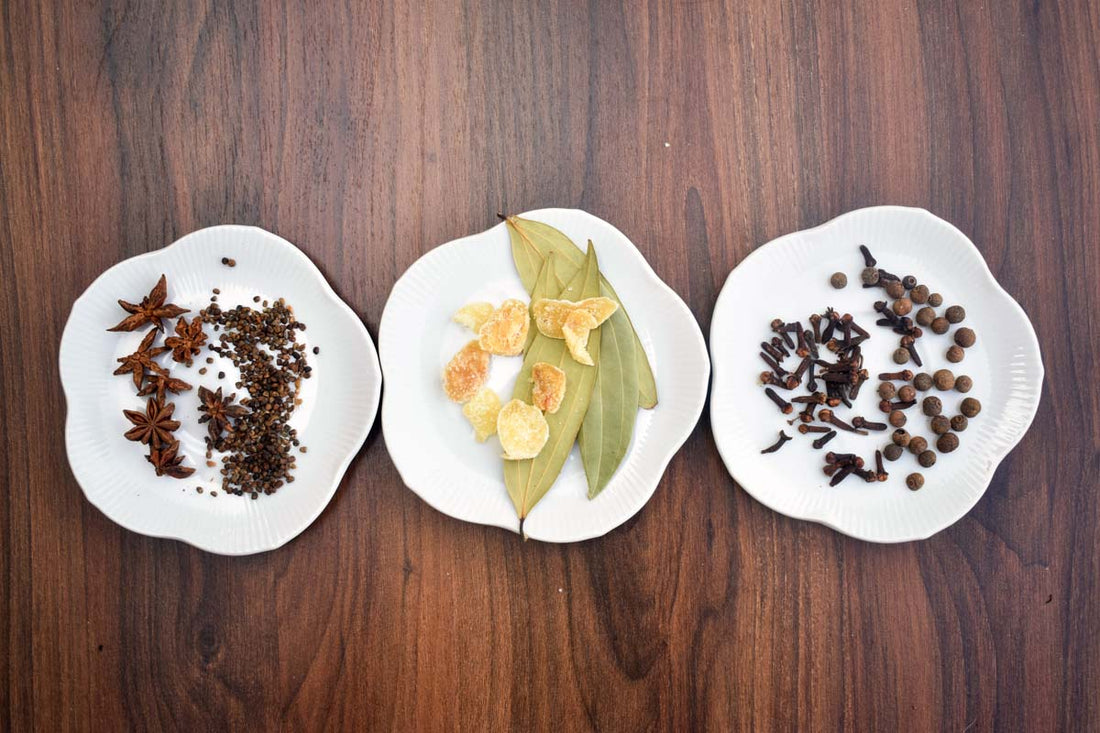
![Spring Break Tea Variety Pack [6-Pack Variety of Flavors]](http://www.plumdeluxe.com/cdn/shop/files/spring-break-pack.jpg?v=1740682266&width=165)

